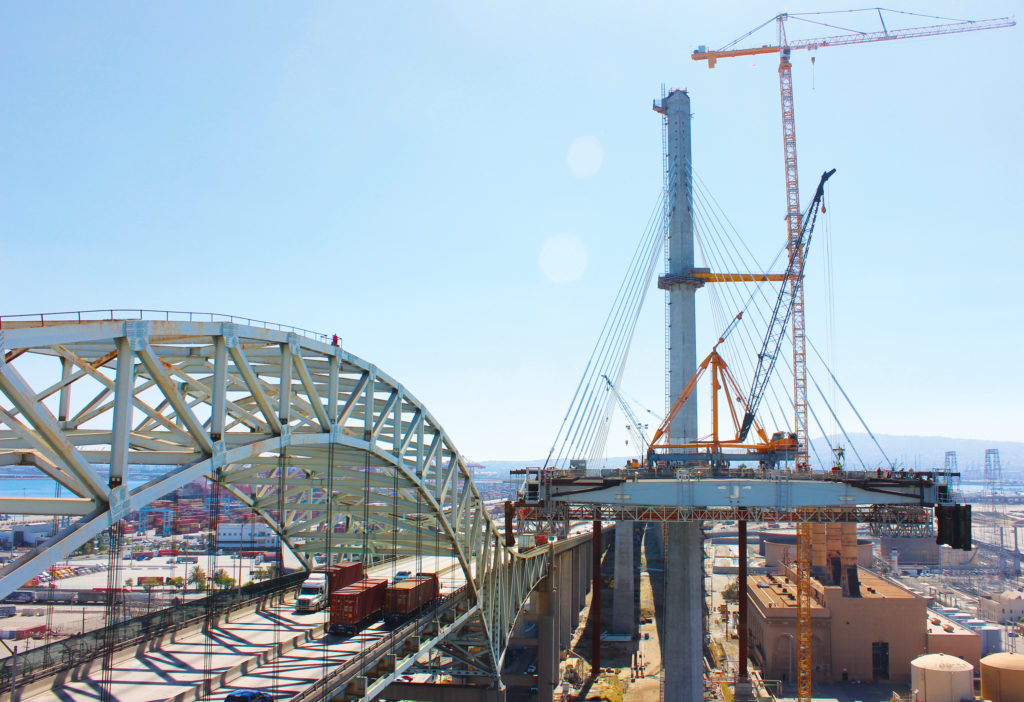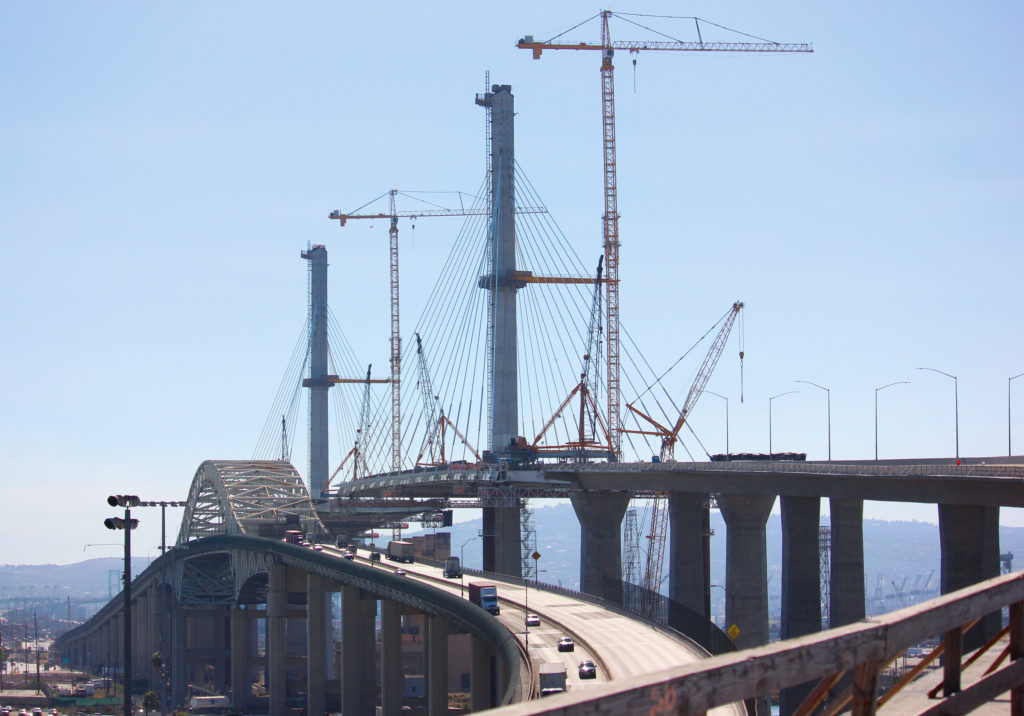The Port of Long Beach is expecting to fulfill the main goal of its Gerald Desmond Bridge Replacement Project in April 2020, when the new bridge is scheduled to open to traffic. While the finishing touches on the new bridge over the port continue, plans for the demolition of the old structure are also in the works, according to Duane Kenagy, capital programs executive with the Port of Long Beach.
On August 12, the Long Beach Board of Harbor Commissioners approved a baseline project budget of $62,008,000 for the demolition of the Gerald Desmond Bridge. The budget includes $9,096,000 for design work, $34,642,000 for construction, $9,670,000 for construction management services and $8,600,000 in contingency funds. Kenagy told the Business Journal that these funds are part of the Gerald Desmond Bridge Replacement Project’s $1.467 billion budget.

T.Y. Lin International, an infrastructure services firm, is finalizing the design work for the demolition. T.Y. Lin officials are proposing two options for demolition: disassembling the bridge in the opposite sequence in which it was built in the late 1960s, or lowering segments of the bridge onto a barge and transporting it to a place where it can be safely demolished. “Both methods have their advantages and disadvantages,” Kenagy said. “It likely will depend on factors like impacts to navigation or how long we would have to close the channel.” Kenagy said a demolition contractor will determine the cost assessment for both options.
The reverse method of disassembling the bridge would require workers to build a supporting structure to prevent the bridge from collapsing in an unplanned manner during the demolition process, Kenagy said. The barge method would likely require a portion of the bridge to be transported to one of the port’s steel recycling centers. Kenagy said alternative methods may be possible, but none have been identified.
Kenagy expects a contract for the demolition to be awarded in fall 2020. Demolition of the main span of the bridge is expected to be done by summer 2021, and the full demolition would be complete by spring 2022. He said the timeline is dictated by a permit from the U.S. Coast Guard, which requires the Gerald Desmond’s demolition to be completed within two years of the new bridge opening. This permit was required to develop the new bridge.

The U.S. Coast Guard’s intent in requiring a two-year demolition window is to limit navigational problems. Kenagy explained that both the new and old bridges span the main channel into the port’s inner harbor area. “When [there are] pieces of steel or other heavy objects that are supported by cranes and not firmly bolted into place, there’s concern about those dropping onto a vessel that would pass underneath,” he said. “So, when we’re doing that kind of lifting activity, we actually temporarily close the channel for safety reasons. . . . We coordinate our construction operations to make sure that we’re not interfering unnecessarily with vessel navigation through the channel.”
The demolition project is expected to take 18 months, according to Kenagy. “We’ll be well within that [two-year] window,” he said.
He added that some challenges during the demolition process will need to be addressed. Some of these include: reducing the exposure of lead to the atmosphere, since the old bridge was painted with lead-based primers; limiting the aforementioned navigation through the main channel; avoiding damage to the new bridge, since the two structures are in close proximity; and limiting the nesting of birds, specifically falcons that already occupy the old bridge.
Matthew Arms, acting director of environmental planning with the Port of Long Beach, said a pair of peregrine falcons have been nesting under the existing Gerald Desmond Bridge since at least 2012. “Normally, they would not want to nest in such a noisy or disruptive area, so that makes them a little bit unusual,” he said. “They have stayed in this one nest year-round for many years, and that’s unusual. Typically, after the eggs hatch and the babies are out of the nest, they leave and come back to the same spot year after year. But these falcons have held up there under the bridge all year long. They’re a unique pair.”
Port staff hired Carl Thelander – principal of BioResources Consultants, an Ojai-based environmental firm – to monitor the falcons and to determine if the construction of the new bridge was disturbing their habitat.
Now that the falcons’ home is set to be demolished, Arms said a plan is being put in place by Thelander, with close consultation from the California Department of Fish and Wildlife, to build a new nesting area for the falcons on the new bridge. “Those conversations are . . . happening to figure out what the transition plan for those falcons will be,” he said.
